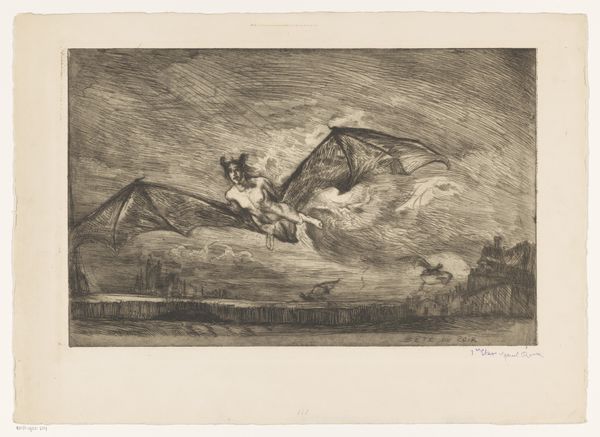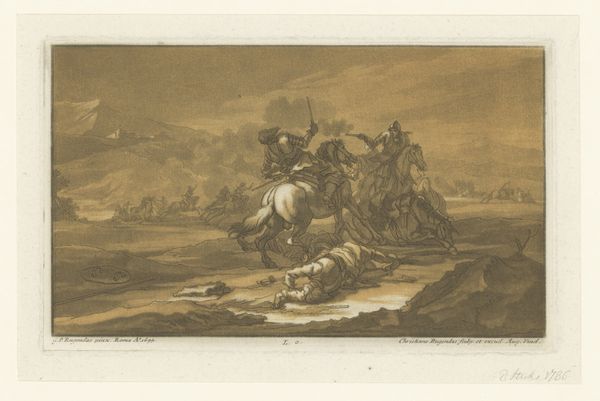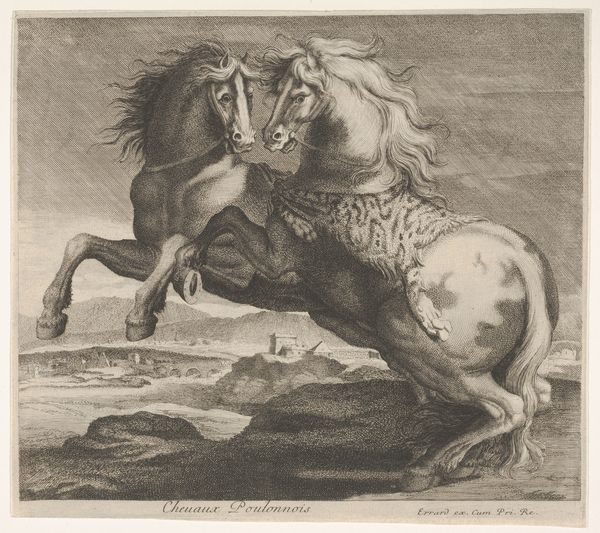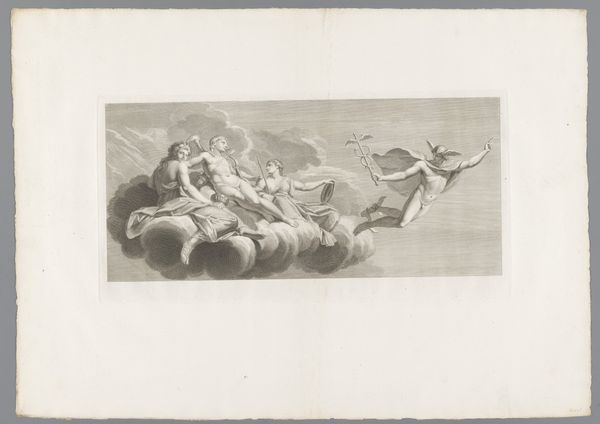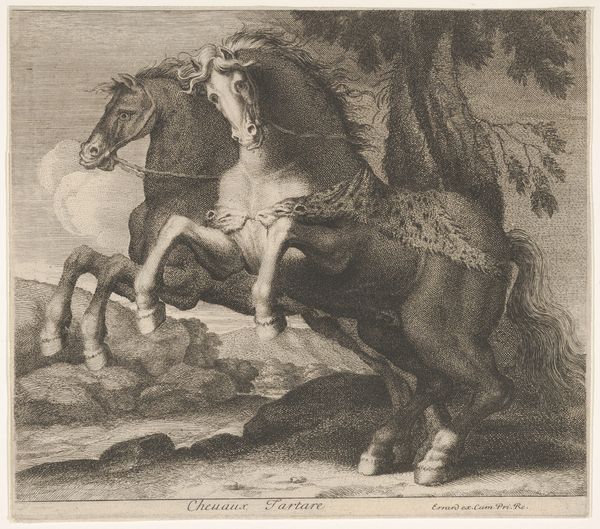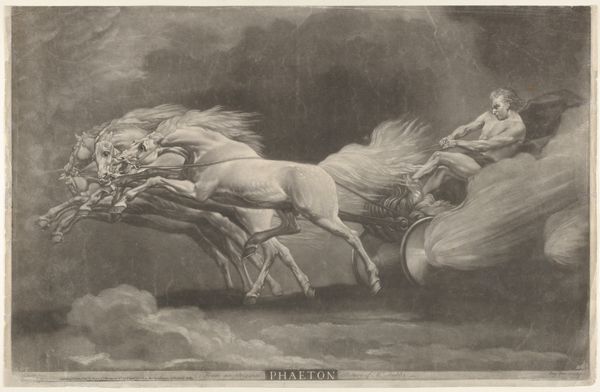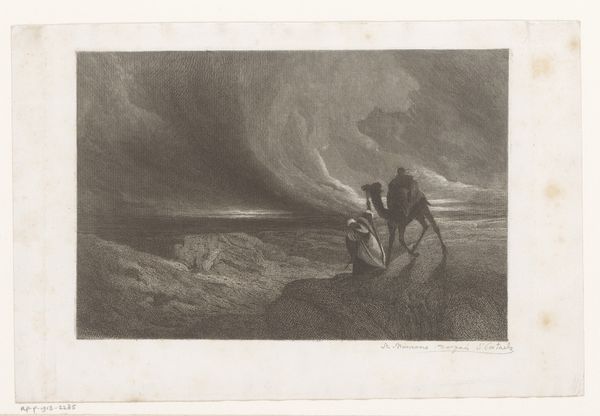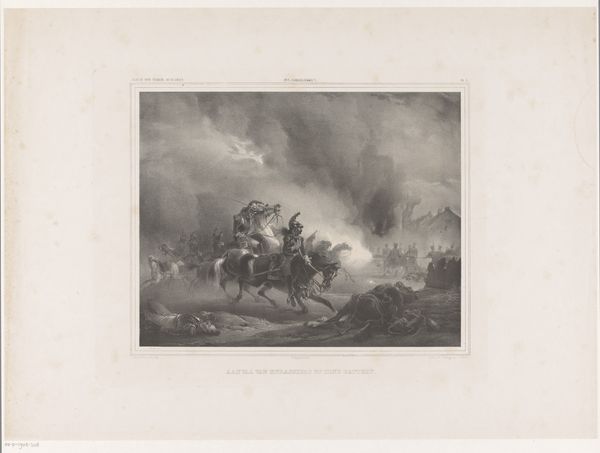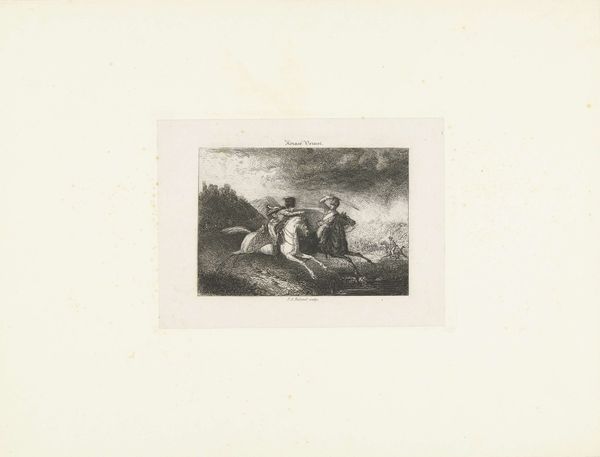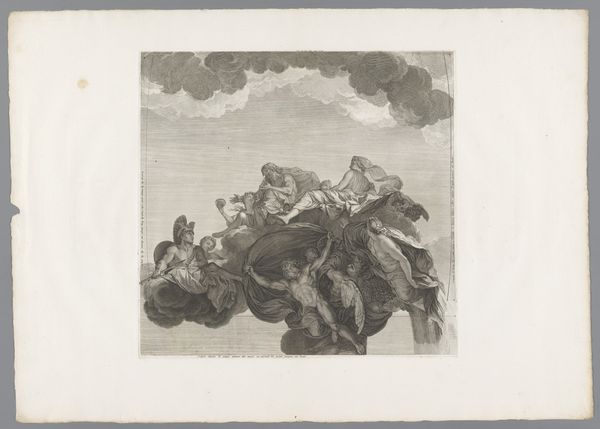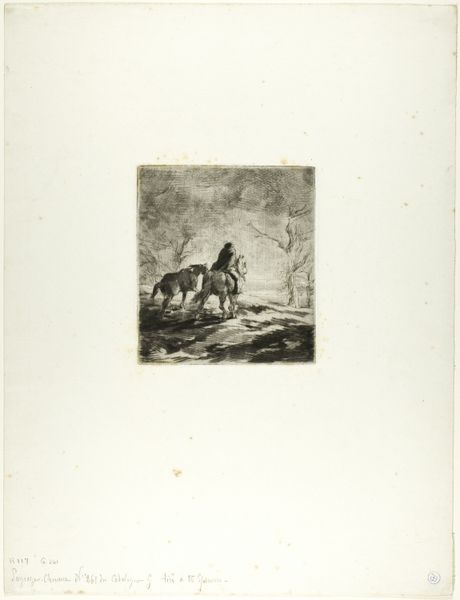
drawing, charcoal, pastel
#
drawing
#
neoclacissism
#
allegory
#
landscape
#
charcoal drawing
#
pencil drawing
#
charcoal
#
pastel
Dimensions: height 445 mm, width 551 mm
Copyright: Rijks Museum: Open Domain
Curator: Look at this dramatic drawing, Phaëton in the Sun Chariot, dating from about 1765 to 1766. It’s rendered with charcoal and pastel, a powerful interpretation of the classical myth. Editor: It's immediately striking. The movement practically explodes off the page. There’s a wildness and desperation communicated through Phaëton's pose and the frantic energy of the horses. What sociopolitical tensions might this reflect? Curator: Well, considering the Neoclassical movement's focus on order, reason and the lessons of the past, this piece challenges that through its depiction of chaos. This is based on Ovid's story from the *Metamorphoses*, so in many ways, Phaëton symbolizes unchecked ambition and the dangers of hubris and the catastrophic effects that could arise when the common man gets power. It’s important to remember that artists often acted as agents to political causes and rulers. Editor: Exactly! So the uncontrolled power dynamic of royalty could be viewed in this image through this lens as we can appreciate it in the broader contexts of control over lower classes in the social hierarchy and its political and economic impact at this period of the 18th century? The image feels almost… prophetic? Like it’s capturing a pre-revolutionary unease. Curator: That's insightful! The medium adds to the drama. The blending of charcoal and pastel creates a softness in the clouds, almost as though we're seeing them boil, while the bold, distinct lines emphasize the panic within Phaëton's expression. We might consider the social and institutional impact here, the message the artist sought to display at a very volatile moment of transition. Editor: Absolutely. The horses too; look how they strain against the reins, pulling in different directions. Their terror becomes almost palpable in this high-stakes scene and how art serves to critique power dynamics. The choice to focus on that climactic moment underscores the themes of instability, chaos, and consequence, themes ever present today. Curator: Thinking about the broader strokes here. From a more structural lens, it speaks to art’s continuous conversation, and interpretation, with past narratives while addressing contemporary social conditions. Editor: And perhaps most significantly, reminding us of the cost when hubris fails.
Comments
No comments
Be the first to comment and join the conversation on the ultimate creative platform.
